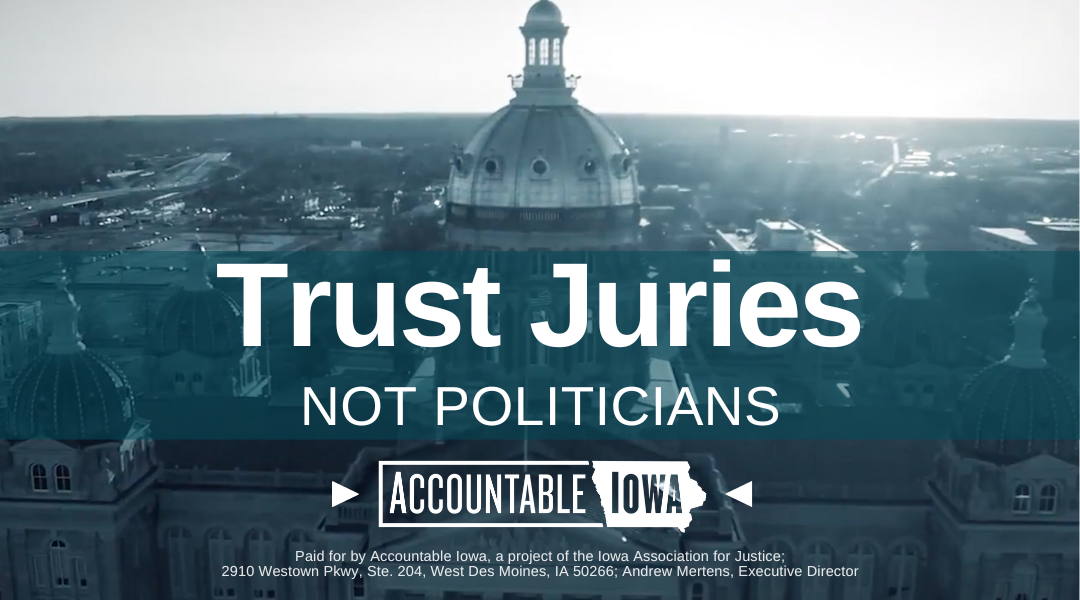The legislature is nearing adjournment but the last few negotiations, at this point, remain between House and Senate leaders and the governor and they still are being worked out. The House has passed all of our budgets and the Senate still has the budgets to do. The biggest sticking point is that the Senate has passed the school choice bill and they are wanting the House to also pass it, but it is stuck in the House. I am hopeful we will pass it because I’m supportive of it as are House leaders but I’m not sure it will get done. The governor is also very supportive as it is her top priority but my guess is we are 5 to 10 votes short. That is still a good number of votes away from the 51 needed for a constitutional majority in the Iowa House.
What the School Choice Bill Does:
- It is an Educational Savings Account (ESA) program called the “Students First Scholarship Program”. It provides for 10,000 student scholarships a year with an account for each student. About $5300 of the state aid for each student would go to the family to use for expenses like tuition and textbooks for an accredited private school of the family’s choice.
- Contrary to what I’ve heard reported over and over, it is not a voucher program. Vouchers go straight to the school bypassing the family. With ESA’s, the money would go into an account for the student. The family would then decide what school to send their child. The money would follow the student, like it does for the Iowa Tuition Grant.
- 5000 scholarships would be available for students whose families are up to 400% above the federal poverty level (FPL). This includes low and middle income families. The other 5000 scholarships would be available for students with IEP’s (special education students). Local property taxes and federal funds would stay with the public school.
- Senate version: rest of the per-student state aid (about $2000) would go to schools with operational sharing agreements – largely rural schools; Governor version: rest of state aid would go to schools with 500 or less students – again, rural schools.
Why I Support It: Each family and child is individual and unique, so the more options we can offer parents the better student needs will be met and the better education for all our students will be. One particular educational setting does not work for all students, whether it is public school, private school or homeschool. Sometimes students that do not thrive in one setting will thrive in a different setting. This legislation will further open the options for educational settings for students, ensuring more students will have the opportunity to thrive in a setting that fits them.
I should also say that those school administrators and teachers who are pushing back against parents and who want to indoctrinate students with critical race theory, sexual orientation and gender identity ideology, and sexually explicit material need to realize they are only hurting their own school and are giving more strength and momentum to the move toward school choice.
Objections I have heard:
- “You’re taking away money from public schools.” No, this is a separate grant program. It competes against state funding for public schools just like Medicaid funding and public safety funding do. But it doesn’t come out of the state funding for public schools. That is a separate decision. We have to juggle all state programs against each other. We can support our public schools at the same time; it’s not either/or. We have increased funding to public schools every year, a $1 billion increase over the last decade. We must remember that with state funding and property taxes public schools get over $5.5 billion. This program is estimated to cost $55 million. To put this into perspective….Combined with the other taxpayer money supporting private schools, private schools only receive 2% of the funding public schools receive. In addition, in states that have strong ESA programs there has not been a mass exodus from public schools; participation rates are shown to be extremely low.
- “This will ruin public schools.” The idea behind school choice is that more competition between schools helps make all schools better, thus raising the quality of education for all students. Iron sharpens iron. In states with robust school choice programs such as Arizona, Florida, Indiana, Ohio, and Wisconsin, the public school systems continue to grow while achievement has continued to improve for both those students who take advantage of school choice programs as well as those who choose to remain in public schools. Why would school choice ruin a public school that is doing a good job? A public school that is doing a good job has nothing to fear.
- “This will ruin our rural schools.” The balance of the per-pupil state aid funding above $5300, as well as the property tax and federal funding will go to rural schools who will not even be having to educate that student. Also, there are few private schools that even exist in rural areas for parents to choose to send their child to. I believe our rural schools will be largely unaffected.
- “Public dollars shouldn’t be going to fund private schools.” That has not been the case for a long time. We have had public dollars indirectly funding private schools for many years. The biggest example is the Iowa Tuition Grant, a program which began in the mid-70’s, which helps students in private colleges fund their education. Wartburg College here locally is a big beneficiary of that program. The Iowa Tuition Grant is like an ESA program: the money goes to the student, who then chooses the college to attend. Public dollars like Medicaid don’t dictate what doctor the patient goes to; they are given to the patient and the patient chooses their doctor. Same with food stamps: government doesn’t dictate what grocery store that is spent at. That said, I do have concerns with future governments attaching conditions that are perhaps unacceptable to private schools due to their usually faith-based nature in order to receive this funding. However, that has not occurred with the Iowa Tuition Grant program, nor has it occurred with ESA’s in other states, and so I wouldn’t think it should occur with ESA’s here in Iowa.
- “If a private school gets taxpayer money they should have to live by the same rules we do.” The legislation only applies to accredited private schools; non-accredited private schools are not eligible for this program. Accredited private schools are required to use the Common Core and other mandated state standards as public schools are. They are also required to administer standardized tests and to pass accreditation, just as public schools are. I have worked for many years to roll back one of the most heavy-handed and comprehensive set of regulations regarding educational policy that relentlessly affects our frontline workers (teachers) day in and day out that public schools have to deal with, which is the Common Core & the science and social studies mandated standards. All I have seen is very little resistance from public schools to those oppressive standards, but rather they have only shown staunch support for them. I don’t really see any serious efforts by public schools to get rid of any of their rules.
- “Private schools can turn away students, but public schools must take all students.” Public schools restrict students by geographical district boundaries. They can deny open enrollment to students who apply and they have done that. Since private schools have more limited funding than public schools they do not always have the capacity to provide an education for a student with special needs. An ESA program may increase the capacity of a private school to educate a child with special needs because the school would receive more funding.
- “There is no accountability for this taxpayer money if it goes to private schools.” Remember that these accredited private schools also have to teach the same state standards, administer the same standardized tests, and go through an accreditation process as mentioned above. The Dept. of Ed., the State Board of Ed., and the Attorney General each have a role in providing accountability under this proposal.
- “If we had more money we could help these children.” We have increased funding to the schools by $1 billion over the last decade. That is a huge amount of money. I don’t think money will solve the problem. Let’s take a different approach. It’s time to give school choice a chance.
- “Kids who attend private schools do much worse than kids who stay in public schools.” Simply not true. Many studies show the exact opposite. They show kids who are able to take advantage of school choice programs do much better than they did when they were in public schools. That is reasonable because these particular kids that were in the public school were not thriving and needed to move to a better educational setting for them, one in which they did thrive. And these studies also show that school choice leads to better outcomes in public schools.
- “This bill is racist and discriminatory towards minorities.” All Iowa students regardless of race or ethnicity can take advantage of this opportunity. Why would we want to force a parent to keep a child in a school that the parent doesn’t think is best for them no matter what race they are?
- “This is just a stepping stone to full-blown vouchers.” I have already shown why this is not a voucher program. If it helps improve student outcomes, why wouldn’t we want to do it? Why would we not want a family to be able to choose the school that best meets their needs? Why would we want to limit a child’s opportunities?
Are these arguments designed to keep the status quo? In some families, the status quo does not work. Parents with low to moderate income and who cannot homeschool their children, do not have many opportunities for choice in education. These children should not be denied a better education due to their family income level or where they live. These families need some help to be able to make a choice that is best for their child. This is a freedom issue for them. We must consider all Iowa kids, not just some of them. This is a student-centered proposal; not a system-centered proposal. Students are funded, not systems. The child does not exist to serve the educational system. The educational system exists to serve the child.

















